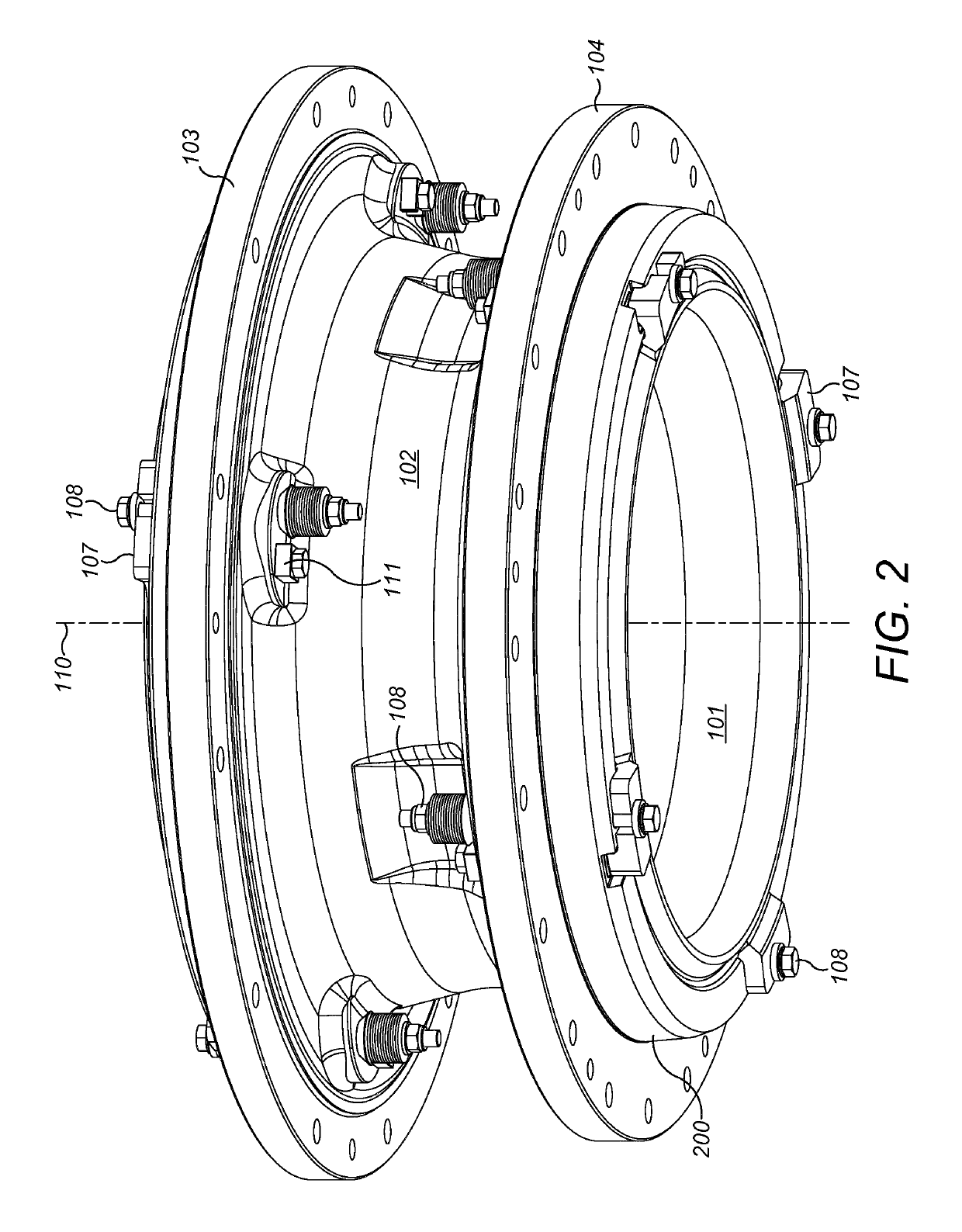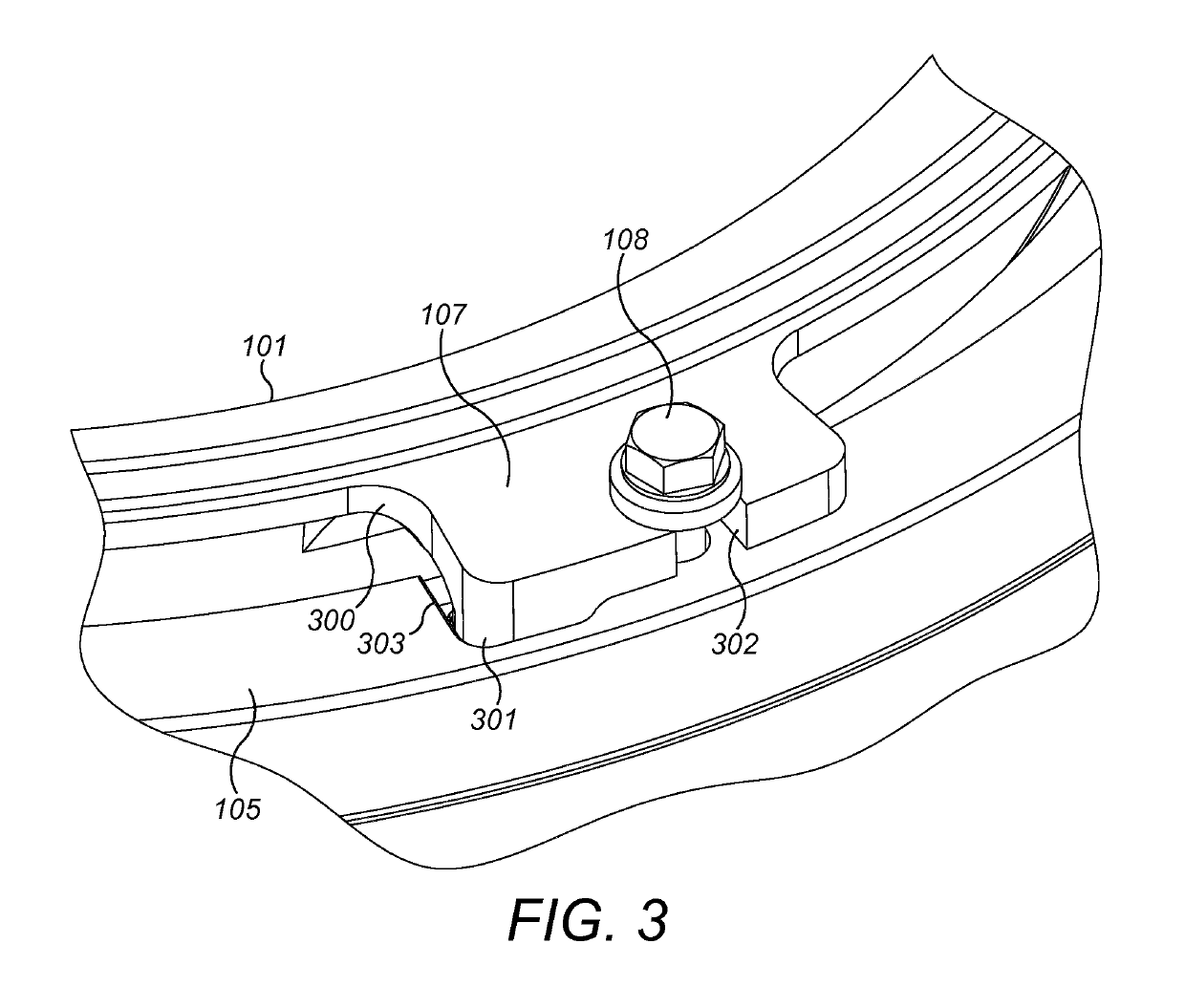Crushing shell with rotational lock
a technology of rotation lock and crushing shell, which is applied in the direction of grain treatment, etc., can solve the problems of weakening the topshell, and affecting the operation of the topshell
- Summary
- Abstract
- Description
- Claims
- Application Information
AI Technical Summary
Benefits of technology
Problems solved by technology
Method used
Image
Examples
Embodiment Construction
[0031]Referring to FIGS. 1 and 2, shell assembly 100 comprises a topshell indicated generally by reference 102 having a generally annular configuration extending around central axis 110. Topshell 102 comprises an upper annular rim 103 separated axially from a lower annular rim 104. An annular tapper-fit collar 105 projects axially from a radially inner region of upper annular rim 103 and a corresponding tapper-fit collar 200 projects axially from lower annular rim 104. Collar 105 and rim 103 provide a mounting for a crusher spider (not shown) representing an upper region of the gyratory crusher. Similarly, lower annular collar 200 and rim 104 provide regions for mounting top shell 102 on a corresponding bottom shell (not shown) of the crusher. As with conventional topshell configurations, collars 105, 200 comprise a radial thickness being less than the respective rims 103, 104.
[0032]Assembly 100 comprises a first outer crushing shell (concave) 101 secured at topshell 102 via rim 103...
PUM
 Login to View More
Login to View More Abstract
Description
Claims
Application Information
 Login to View More
Login to View More - R&D
- Intellectual Property
- Life Sciences
- Materials
- Tech Scout
- Unparalleled Data Quality
- Higher Quality Content
- 60% Fewer Hallucinations
Browse by: Latest US Patents, China's latest patents, Technical Efficacy Thesaurus, Application Domain, Technology Topic, Popular Technical Reports.
© 2025 PatSnap. All rights reserved.Legal|Privacy policy|Modern Slavery Act Transparency Statement|Sitemap|About US| Contact US: help@patsnap.com



